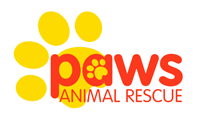How to house train your puppy or adult dog
Toilet training is an important part of caring responsibly for your dog, whether you’re getting a puppy or an adult dog, you need to know how to house train them properly. Puppies need to learn important life skills, and training is an important bonding experience between you both.
Dogs don’t have full bladder capacity until they are approximately 12 months of age. Many rescue dogs may have learned that toileting happens in the same place that you eat and sleep and it will take a bit of time to change this mindset.
When you begin toilet training you need to give your dog plenty of opportunities to go and you’ll need to actively supervise your dog each time. Many pet parents will make the mistake of opening the door for their dog and then anticipating the dog will know to go by themselves and come back in. This is where dogs learn that going to the garden signifies being alone and bored. They’ll possibly wait at the door until you let them in again and then go indoors which will be highly frustrating to dog owners. Give your dog plenty of opportunities to go to the toilet in an appropriate place and ensure you go out with them so you can reward when they get it right. Be proactive and have your rain coat, umbrella, boots and treat bag by the back door to set you and your dog up for success.
Take them out when they wake up, after every meal, after playtime, before bed, after every drink of water,; before you leave them and when you come back, and then every 45 minutes. For adult dogs that never learned to go outside, it is the exact same steps but it may take a little longer. Patience and understanding is key.
Signs your dog needs to toilet
These can include:
Fidgeting,
Sniffing around,
Beginning to circle before squatting.
Toilet training steps
When you recognise the signs that your dog is thinking about toileting:
Take them to the correct place so that you can reward them when they go. Try to take them to the same place each time.
When they begin to toilet, use a verbal cue they can associate with the correct behaviour eg. ‘toilet’.
When they’ve finished, reward them immediately, every time, with lots of praise and play to build positive associations with going in that area
Before going back inside, walk your dog around or play for a bit. This way they don’t learn that going to the toilet ends time outside, which could mean that they hold onto the last minute before going.
If you notice your dog about to go in the wrong place, interrupt them but in a way that doesn’t punish them, e.g. calling them away and encouraging them to follow you. Take them calmly towards the correct place and give them lots of praise when they toilet there. Don’t shout, otherwise your dog may learn that it’s only safe to go when you’re not around.
What to do if your dog eliminates indoors
Never punish or scold your dog if you find an accident after the event or as it’s happening. Your dog may become scared and confused as they won’t associate the punishment with the accident. They will simply learn to fear you or to be afraid to go in front of you which makes the routine garden trips for toileting outside a lot harder as your dog will be avoiding going in front of you.
Simply clean the area using a warm solution of biological washing powder and rinse with water or puppy urine enzyme cleaner. This should remove the smell of your dog’s urine marking and reduce the chance of your dog using this area again.
There are different reasons for prolonged toileting indoors, e.g. health or lack of training so if you’re concerned, always seek advice from your vet as it could be the result of a UTI or another underlying medical condition.
Continue taking your dog outside and reward them with lots of praise when they go and eventually they’ll ask to go outside to toilet.




